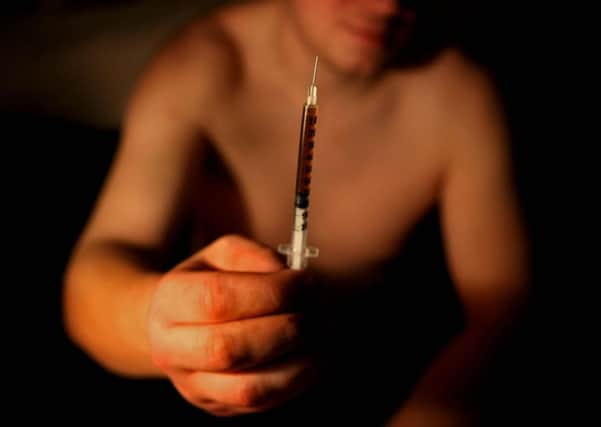Kettering's heroin overdose death rate twice the national average


The town saw 3.7 deaths related to the drug use per 100,000 people from 2014 to 2016 – almost twice the national average of 1.9.
That’s more than anywhere else in Northamptonshire, with Northampton having the second highest rate at 2.7.
Advertisement
Hide AdAdvertisement
Hide AdAlison Snelling, services manager at S2S Northamptonshire, said: “Our Kettering service, as commissioned by Northamptonshire County Council Public Health, continues to support those suffering from a wide range of difficulties, including long-term health conditions, social isolation and deprivation, by assisting with or signposting to temporary accommodation, personal outreach and assertive engagement and support for those who are most vulnerable.
“A few weeks ago, we arranged a naloxone awareness week across all our services in Northamptonshire in order to increase interest and promote naloxone, which can save lives by temporarily reversing the effects of an overdose, to our service users.
“Staff in Kettering continue to work with service users on a regular basis to promote the use of naloxone and support them to access healthcare interventions, as well as ongoing awareness of the risks of overdose.
“We are very proud to have issued hundreds of naloxone kits across the county from our four sites this past year, as well as many kits to partner agencies, who may come into contact with people most vulnerable to the risk of an overdose.
Advertisement
Hide AdAdvertisement
Hide Ad“We are continuously strengthening and improving pathways to make better use of existing services, working together with other agencies to combat the issue between physical health and substance misuse.”
Elsewhere in the county, East Northamptonshire had a rate of 1.8 and South Northamptonshire had a rate of 1.5.
Corby, Daventry and Wellingborough had no rate recorded because there were fewer than three deaths.
Analysis by the Office for National Statistics found six of the 10 highest death rates were in UK coastal towns, many of which suffer from deprivation.
Advertisement
Hide AdAdvertisement
Hide AdBlackpool had the highest rate with an astonishing 14 deaths per 100,000 people.
Others included Bournemouth, Portsmouth, Hastings and Swansea.
Miss Snelling said it was unsurprising that the mortality figures were high in deprived areas.
She said: “Every drug-related death is a tragedy and we continue to work with our partners to understand the factors involved and the role we can play in reducing them.
Advertisement
Hide AdAdvertisement
Hide Ad“We know that there are often several factors which contribute to drug-related death statistics, including physical health conditions, such as liver disease, lung disease and cardiac problems, many of which are not predicted or diagnosed in time, and are exacerbated by long term substance misuse.
“We have also seen that drug-related deaths are often associated with poverty and deprivation.
“Within this context, it is unsurprising that mortality figures can be high in areas of deprivation, especially at a time when drug-related deaths are rising nationally – when deprivation is often seen within an ageing cohort of drug users with increasingly complex health conditions.
“Finally, it is worth noting that often drug-related deaths are drug users who are not in treatment.”
She added that Change Grow Live is committed to proactively predicting and preventing the core causes of drug-related deaths, rather than just focusing on reactive treatment.